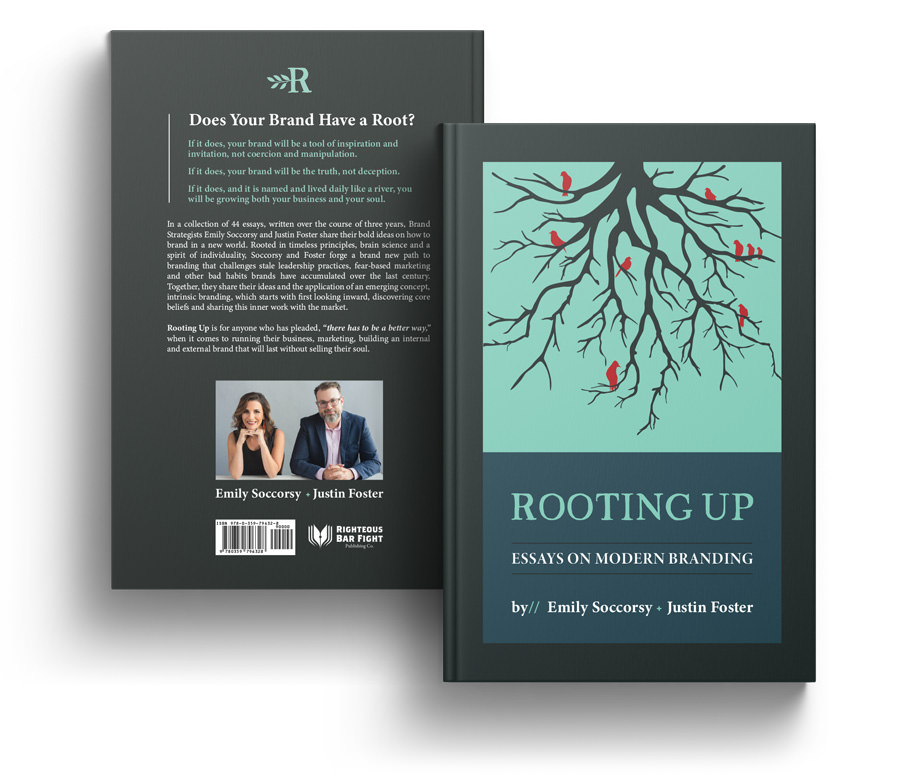Filed Under: Intrinsic Branding
By Emily Soccorsy
Once again, be reminded: Your brand is your culture, your culture is your brand.
The 2022 Gallup State of the Global Workforce Survey and Report declares, “Employee well-being is the new workplace imperative.”
While the emphasis on taking care of the humans who make up your brand is appreciated, it’s hardly something new.
Employee well-being has been vital to your business and your brand since humans started forming work groups and committing themselves to objectives larger than themselves.
Employee well-being is not a lucky byproduct, a nice-to-have, something ignored in favor of productivity rates, profitability, and effective incentivizing.
Still, in the upheaval of the last several years, it’s possible you as an overwhelmed leader or leadership team might have struggled to care for your brand, your people.

And, with all the change the last couple of years have brought us, you might be confused as to how you take care of your team now that values have shifted dramatically.
You might be feeling the sting of departures.
You might be assuming you and your team are working in sync toward the same goals – only to discover there is more fracture or dissent than you realized.
You might have the sense that enthusiasm is waning.
If you’re coming to those realizations now, don’t panic.
Here are a few different ways to think about updating your care for your team and update your brand at the same time.
(Repeat after me: Brand is culture, culture is brand.)
Full disclosure: these are things to stop doing – and others to begin. Change often begins with releasing old habits and replacing them with new approaches. As we’ve been exploring, this is a season for releasing.
Stop investing in general initiatives. Start investing in the personal goals of your team. Employers who show they care about their people earn the trust and loyalty of their team. How can you do this? Stop investing in larger scale events or trainings and get a bit more personal and direct. Begin by asking what their personal goals are. In our work defining brand strategy and messaging, individuals are asked to share what their personal missions, visions for their futures and big wins are as we uncover the root of the brand. Personal or professional goals are always connected, somehow. When you discover how personal and professional goals intertwine, team members feel seen and accepted. If there is a way to support the personal goals of team members, either through comments, opportunities or connections you can make, take a chance and do so. These frank conversations and heartfelt actions are likely to change the dynamic and engage people in compelling ways, which gives them more energy for the work and for representing the brand positively.
Stop avoiding the deep conversations about why you do this work. Instead, pause to codify what you are all working for – and toward. ‘Nobody buys what you do, they buy why you are doing it,’ so said Simon Sinek ten years ago. Still so true. Have you shared why you do what you do with them? Have you put into clear language the vision you are working toward? Have you given them the gift of messaging so they can continue to easily share that vision and feel invested themselves every time they do so? As the leader, your team is relying on you to share the why – repeatedly and particularly now when so much has shifted for so many. Language is how we share ideas, emotion and energy. When we do so we can connect deeply with all our audiences – including those who work alongside us. Then, you can engage them further by asking why your team has chosen to give you their immense talents.
Stop crowding their schedules. Start giving them space. Friend of the Root + River brand, Chris Ronzio, CEO of Trainual, recently canceled all meetings on the books for a week throughout the organization. His goal? To free his people from the constraints of meetings and the associated tasks that come with them and to help unleash creativity. He also wanted to give them time to breathe and work at a more relaxed pace. This is the sort of counter-cultural action we as leaders need to be providing more. If we do, we again increase loyalty, revive engagement and infuse new thinking into the brand. We also give our people time to be humans.
Beyond these three strategies, we strongly urge you to check in with your team about their own state of mind.
The Gallup report also revealed that stress is at an all-time high, and is worse for women.
If your team is feeling stressed, it needs to be addressed.
Is there something they have taken on that can be released? Should some responsibilities be updated or redirected to another team member or contract support? Does their schedule need to be adjusted?
Just a little bit of a change, done thoughtfully, with their input, could provide relief or space to take on other projects. This could breathe new life into a team member’s efforts and energy.
Branding is about communication, internally and externally.
You won’t know if you don’t ask, so release your fear, and begin the conversation.
